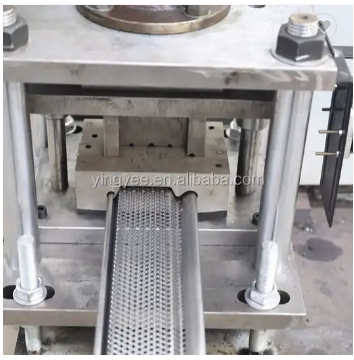
Understanding Rolled Forming Machines A Key Component in Modern Manufacturing
In the realm of modern manufacturing, efficiency, precision, and sustainability are paramount. One of the machine tools that embodies these qualities is the rolled forming machine. This innovative equipment has revolutionized the way various metal products are produced, offering manufacturers an effective solution for creating high-quality components with reduced waste and increased productivity.
What is a Rolled Forming Machine?
A rolled forming machine is a type of equipment used to shape metal sheets or strips into desired profiles through a series of consecutive bending operations. This process involves feeding a flat metal strip through a series of rollers, each designed to progressively shape the metal into a specified contour. The result is a continuous length of formed product, which can be cut to size as needed.
The Rolled Forming Process
The rolled forming process begins with the selection of raw materials, typically cold-rolled steel, galvanized steel, aluminum, or other metal alloys. These materials are chosen based on their mechanical properties and the final application's requirements. The metal strip is then fed into the machine, where it passes through multiple sets of rollers.
Each roller performs a specific function, gradually bending the metal into the desired shape. The rollers are precisely engineered to ensure that the contoured shape is consistent along the entire length of the product. This level of precision is vital, as even minor discrepancies can lead to difficulties in assembly and product performance.
Advantages of Rolled Forming Machines
1. High Efficiency Rolled forming machines are known for their high production speeds. Once set up, they can continuously produce long lengths of formed material, significantly reducing manufacturing time compared to other forming processes.

2. Material Savings The rolled forming process generates minimal waste. Since the process utilizes a continuous metal strip, there are no cut-offs or excess material, which is often a drawback of other forming methods.
3. Strength and Durability The process enhances the strength of the final product. As the metal is shaped, it becomes work-hardened, leading to improved durability. This characteristic is particularly beneficial for products that must withstand demanding environments.
4. Versatility Rolled forming machines can produce a wide variety of profiles, including C-sections, U-channels, Z-sections, and custom shapes tailored for specific applications. This versatility allows manufacturers to meet diverse customer requirements effectively.
5. Low Labor Costs Once the machine is set up and operational, the need for manual labor decreases. Operators can monitor the machinery while managing other tasks, leading to increased productivity without a proportional rise in labor costs.
Applications of Rolled Forming Machines
Rolled forming machines find applications across various industries. In the construction sector, they are widely used to produce components like roofing panels, gutters, and structural supports. The automotive industry employs rolled forming for producing chassis parts and body panels, where precision and strength are critical. Additionally, manufacturers of HVAC systems utilize these machines to create ductwork, further showcasing the equipment's adaptability.
Conclusion
In essence, the rolled forming machine is a cornerstone of modern manufacturing. Its ability to produce high-quality, precision components at high speeds makes it an essential tool in numerous industries. As technological advancements continue to shape the evolution of manufacturing processes, rolled forming machines are expected to become even more efficient and versatile, further solidifying their role in meeting the demands of an ever-changing market landscape.
Whether for creating structural elements in construction or intricate designs in automotive applications, the importance of rolled forming machines cannot be overstated. As manufacturers strive for excellence in their production processes, investing in advanced rolled forming technology will undoubtedly be a key strategy for success in the years to come.